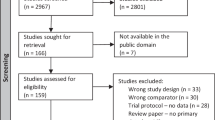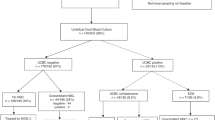Abstract
Objective
Considerable variation in the care of extremely low gestational age infants (ELGAN) contributes to the variation in incidence of bronchopulmonary dysplasia (BPD). We compared management and outcomes of two neonatal centres with different respiratory support strategies.
Study design
Retrospective cohort study of infants <28 weeks gestational age treated at two units in Australia and the UK between 2015 and 2017.
Result
Of 492 infants, the overall incidence of BPD for extremely preterm infants was 62.20% and was similar across both sites (64.84% at Monash vs. 60.65% at Oxford). Independent predictors for the development of BPD or mortality included the days on mechanical ventilation (MV, adjusted OR 1.13, 95% Cl 1.07–1.19) and use of inhaled nitric oxide (adjusted OR 13.42, 95% Cl 1.75–103.28).
Conclusion
Primary choice of non-invasive respiratory support had no significant impact on BPD development. Duration of MV and using nitric oxide were independent predictors for death or BPD.
This is a preview of subscription content, access via your institution
Access options
Subscribe to this journal
Receive 12 print issues and online access
$259.00 per year
only $21.58 per issue
Buy this article
- Purchase on Springer Link
- Instant access to full article PDF
Prices may be subject to local taxes which are calculated during checkout



Similar content being viewed by others
References
Beltempo M, Shah P, Yoon EW, Chan P, Balachandran N, et al. Le Réseau Néonatal Canadien: Annual Report 2019. Toronto ON: Canadian Neonatal Network, Maternal-Infant Care Research Centre 2020.
Stoll BJ, Hansen NI, Bell EF, Walsh MC, Carlo WA, Shankaran S. et al. Trends in care practices, morbidity, and mortality of extremely preterm neonates, 1993-2012. JAMA. 2015;314:1039–51.
Sweet DG, Carnielli V, Greisen G, Hallman M, Ozek E, te Pas A, et al. European Consensus Guidelines on the Management of Respiratory Distress Syndrome—2019 Update. Neonatology 2019;115:432–50.
Roehr CC, Gröbe S, Rüdiger M, Hummler H, Nelle M, Proquitté H, et al. Delivery room management of very low birth weight infants in Germany, Austria and Switzerland_a comparison of protocols. Eur J Med Res. 2010;15:493–503.
McCarthy LK, Morley CJ, Davis PG, Kamlin CO, O’Donnell CP. Timing of interventions in the delivery room: does reality compare with neonatal resuscitation guidelines? J Pediatr. 2013;163:1553–7.e1.
Vanpee M, Walfridsson-Schultz U, Katz-Salamon M, Zupancic JA, Pursley D, Jonsson B. Resuscitation and ventilation strategies for extremely preterm infants: a comparison study between two neonatal centers in Boston and Stockholm. Acta Paediatr. 2007;96:10–6.
Shah PS, Lui K, Sjörs G, Mirea L, Reichman B, Adams M, et al. Neonatal outcomes of very low birth weight and very preterm neonates: an international comparison. J Pediatr. 2016;177:144–52.e6.
Adams M, Bassler D, Bucher HU, Roth-Kleiner M, Berger TM, Braun J, et al. Variability of Very Low Birth Weight Infant Outcome and Practice in Swiss and US Neonatal Units. Pediatrics. 2018;141:e20173436.
Lambert P. STPM2_STANDSURV: Stata module to obtain standardized survival curves after fitting an stpm2 survival model. 2018. Statistical Software Components S458289, Boston College Department of Economics, revised 19 Jun 2018.
Nakanishi H, Suenaga H, Uchiyama A, Kusuda S. Persistent pulmonary hypertension of the newborn in extremely preterm infants: a Japanese cohort study. Arch Dis Child - Fetal Neonatal Ed. 2018;103:F554.
Khemani E, McElhinney DB, Rhein L, Andrade O, Lacro RV, Thomas KC, et al. Pulmonary Artery Hypertension in Formerly Premature Infants With Bronchopulmonary Dysplasia: Clinical Features and Outcomes in the Surfactant Era. Pediatrics. 2007;120:1260.
Clark RH, Ursprung RL, Walker MW, Ellsbury DL, Spitzer AR. The changing pattern of inhaled nitric oxide use in the neonatal intensive care unit. J Perinatol. 2010;30:800–4.
Cheng DR, Peart S, Tan K, Sehgal A. Nitric therapy in preterm infants: rationalised approach based on functional neonatal echocardiography. Acta Paediatr. 2016;105:165–71.
Sasi A, Sehgal A. Use of inhaled nitric oxide in preterm infants: a regional survey of practices. Heart Lung. 2014;43:347–50.
Kumar P. Use of inhaled nitric oxide in preterm infants. Pediatrics. 2014;133:164–70.
Stoll BJ, Hansen NI, Bell EF, Shankaran S, Laptook AR, Walsh MC, et al. Neonatal outcomes of extremely preterm infants from the NICHD Neonatal Research Network. Pediatrics. 2010;126:443–56.
Botet F, Figueras-Aloy J, Miracle-Echegoyen X, Rodríguez-Miguélez JM, Salvia-Roiges MD, Carbonell-Estrany X. Trends in survival among extremely-low-birth-weight infants (less than 1000 g) without significant bronchopulmonary dysplasia. BMC Pediatr. 2012;12:63.
Acknowledgements
We would like to thank Prof. Neena Modi and Dr. Chris Gale (Imperial College London) for their tireless work in leading and managing the NNRD.
Author information
Authors and Affiliations
Contributions
KT and CCR conceived the study. SS and SZ collected the data. SS, KT and AE analysed the data and all authors contributed to interpretation of the data. SS wrote the first draft of the manuscript and all authors (SS, SZ, AE, KT and CCR) contributed to drafting or revising the manuscript critically for important intellectual content.
Corresponding author
Ethics declarations
Competing interests
The authors declare no competing interests.
Additional information
Publisher’s note Springer Nature remains neutral with regard to jurisdictional claims in published maps and institutional affiliations.
Rights and permissions
About this article
Cite this article
Sun, S., Zivanovic, S., Earnest, A. et al. Respiratory management and bronchopulmonary dysplasia in extremely preterm infants: a comparison of practice between centres in Oxford and Melbourne. J Perinatol 42, 53–57 (2022). https://doi.org/10.1038/s41372-021-01274-5
Received:
Revised:
Accepted:
Published:
Issue Date:
DOI: https://doi.org/10.1038/s41372-021-01274-5



